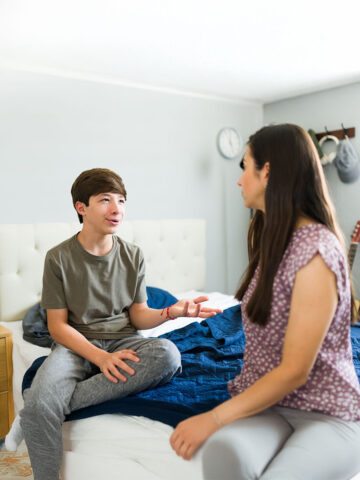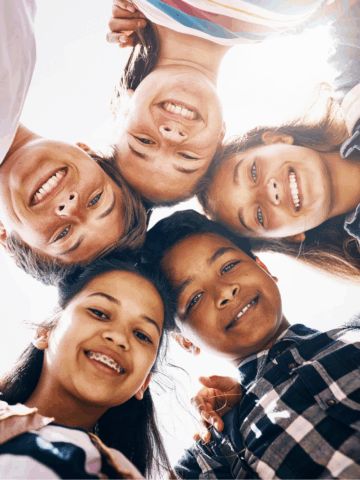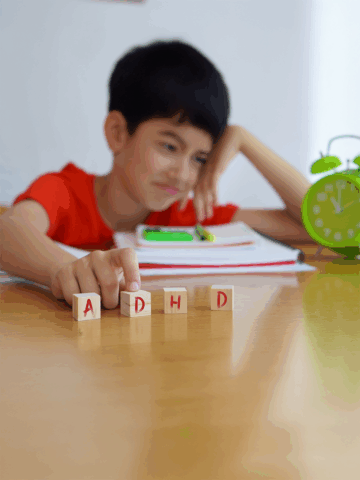By Dr. Chris Min, pediatric psychologist at CHOC and Luiza Mali, predoctoral intern at CHOC
Throughout the COVID-19 pandemic, many of us have experienced a thirst for answers and information — especially to help guide our behavior and try to put our worries at ease. Due to social isolation, many of us have looked online and to social media to fulfill those needs. From receiving breaking news on our smartphones regarding updated guidelines to scrolling through our social media feeds to learn about numbers of infections, we are constantly bombarded with information. As parents, many of us have wondered whether our children’s increased exposure to repetitive and gloomy news is harmful, and whether the information our children consume may come at a cost.
What happens to our minds when we are overexposed to the news
Research shows that continual media coverage of community or health crises — such as COVID-19 — overexposes us to negative information, and this information becomes overrepresented in our minds. This overexposure increases the perception of threat and makes worry more difficult to control.
These psychological risks are particularly true for children, who tend to be more emotionally reactive or have difficulty dealing with uncertainty. For younger children, intaking a huge amount of information may be confusing, overwhelming and raise more questions than answers. For older children and adolescents, particularly those who are worriers, the likelihood of something bad happening may seem like a certainty to them, and that can lead to catastrophic thoughts about the present and future.
Should I isolate my child from the news during COVID-19?
Isolating your child from any information regarding COVID-19 can create a variety of problems. Many times, parents assume that their children are either too young or oblivious to changes in their environment to wonder about why their daily routine looks different. However, children tend to notice these changes, although they may not verbalize their concerns to their parents.
With many changes to their routine and lifestyle — distance learning and social distancing to name a few — that profoundly affect a child’s day-to-day schedule, even young children may notice and wonder why these changes are happening. If parents shield their children from any and all information about why they aren’t going to school or can’t go to their friend’s house, children can feel confused and disappointed.
For older children and teenagers who have unsupervised access to social media and television, parents leave what and how much information is given to their children up to chance. This age group may catch a glimpse of what’s on the news or what friends share on social media, leading to more potential confusion — especially if parents hold back from giving their own accurate take on things.
For these reasons, it is important to ensure that your family is consuming media responsibly and is striking a good balance between absorbing relevant information and protecting your mental health.
Here are some developmentally appropriate ideas to ensure that your family is interacting with media in a careful and helpful way during COVID-19:
Younger children and media
- Filter the kind of information young children are exposed to.
- For toddlers and preschoolers, parents will be the ones providing age-appropriate explanations on things like social distancing and hand hygiene on a need-to-know basis.
- Younger children will benefit from the use of social stories; The National Child Traumatic Stress Network has examples. Children also benefit from informational shows such as the CNN/Sesame Street COVID-19 town hall.
- Avoid having the TV constantly on to avoid unintended exposure to scary media and inappropriate content.
- If children ask you questions and you don’t know the answer, look up the answer using trusted sources such as the Centers for Disease Control and Prevention.
Older children/teenagers and media
- Have a conversation with them about COVID-19.
- Asking open-ended questions to get their understanding of what the virus is, their opinion on how dangerous it is, and their take on the necessity of social distancing can be a great place to start.
- Getting an idea of what their friends are saying on social media can be helpful, as adolescents tend to shift their thinking toward opinions from their peer group.
- Once you have an idea of your teenager’s knowledge base and opinions on COVID-19, confirm the right facts. If you aren’t sure, that’s OK! Look up information on reputable sources like the CDC or World Health Organization.
- Gently challenge any false notions and provide information from trusted sources as evidence.
Media tips for all children
- Set boundaries. Excessive use of media is associated with negative psychological and physical consequences including depression and obesity.
- Set limits for daily use. Encourage active interpersonal exchanges such as video chats with same-age peers, and steer children away from using electronics solely for passive activities such as watching videos.
- Be sure that your child is also spending time away from electronic devices, engaging in physical activity, and other social and educational activities.
- Model appropriate consumption of media and reactions to news reports. Obtain critical updates from reliable sources once or twice a day.
- Avoid sensationalism or repeated coverage of the same information.
- Check in with yourself – am I distressed or agitated? If so, turn it off and pursue other activities. Although some level of worry, confusion, or sadness is to be expected, if your child senses you are feeling overwhelmed and hopeless, they will be more likely become emotionally dysregulated as well. React calmly and provide reassurance so that your child will follow suit.
If your child is expressing excessive worry, anxiety or hopelessness about COVID-19, it may be a good idea to limit his/her exposure to news and social media. With the flood of potential misinformation from social media as well as repeated exposure to distressing content on the news, your child may start to think that the future is hopeless and that his/her own health is at serious risk. Combat this impression by focusing on the measures that your family is currently taking to limit risk of infection as well as steps that your child or teenager can take to ensure continued health and safety. Take time to have a discussion about interesting and fun activities that your child can participate in that follow the public health recommendations.
Get more expert health advice delivered to your inbox monthly by subscribing to the KidsHealth newsletter here.
Learn more about COVID Vaccines for Children and Teens
Get answers to your frequently asked questions – and some peace of mind – with this complete guide to COVID-19 vaccines from CHOC pediatric experts.





